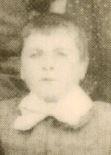Pte
Isaac Edward Claridge
Information about birth
|
Year of birth: 1896 |
|
Place of birth: Papanui, Christchurch, New Zealand |
General information
|
Profession: Labourer |
Army information
|
Country: New Zealand |
|
Force: New Zealand Expeditionary Force |
|
Rank: Private |
|
Service number: 24138 |
|
Units: — Canterbury Regiment, 1st Bn. (Last known unit) |
Information about death
|
Date of death: 12/10/1917 |
|
Place of death: Marsh Bottom, Passchendaele, Belgium |
|
Cause of death: Killed in action (K.I.A.) |
|
Age: 21 |
Memorial
|
Tyne Cot Memorial Panel: 2A |
Points of interest 2
| #1 | Place of birth | ||
| #2 | Place of death (approximate) |
My story
On the 12th of October 1917 the New Zealand Division had to advance to Passchendaele. The attack of the Division was entrusted to the 1st and 2nd Brigade on the right and the 3rd Brigade on the left. Each had half the Divisional frontage, and was to attack in depth; one battalion was to take the first objective, a second battalion was then to pass through to take the second objective, and so on. The objectives assigned to the 1st and 2nd Brigade were four in number. The 2nd Otago Battalion had to secure the Red Line, the 1st Otago would take the Blue Line and the 1st Canterburys would capture the last objective, the Green Dotted Line and the Green Line, the 2nd Canterburys were in reserve. The 1st Canterburys with the 1st Company of the 2nd Canterburys assembled on the south-east side of the Ravebeek. At zero hour 5.25 a.m. on the 12th of October the artillery opened a barrage. The 2nd Otago advanced behind this creeping barrage. Despite of this cover fire the 2nd Otago came under heavy machinegun fire. The barrage did very little towards keeping down the German machinegun fire. After crossing the Ravenbeek the troops found themselves confronted by the German Staden-Zonnebeke Line. This Line was a series of mutually supporting pill-boxes protected by at least two belts of steel wire. It guarded the western slopes of the main ridge, and crossed the Ravenbeek where that stream turns towards the west. The 2nd was unable to pass this Line. The artillery had failed to breach the steel wire, in many cases 50 yards across, and the pill-boxes inside them coverd the whole area with their machinegun fire. By 6 a.m. it became clear that the Battalion could not get on. The artillery barrage had stopped, and there was nothing to hinder the German machine-gunners. The 2nd and 12th Companies of the 2nd Canterburys attached to the 2nd Otago Battalion, came up from reserve and tried to work around the flanks of the pill-boxes at Bellevue, on the Gravenstafel-Mosselmarkt road. Their attempt was in vain. The 2nd Otago was still trapped in front of the impenetrable wire, raked by heavy machinegun fire. The brigade tried to breach the wire by sending in the 1st Otago and 1st Canterbury Battalions, who were waiting behind the 2nd Otago. Instead of taking the 2nd, 3rd and 4th objective they were sent in to help and secure the 1st objective. The 1st Canterburys followed immediately in the rear of the 1st Otago. As they crossed the Ravebeek they came under heavy shell and machinegun fire. After crossing the Ravebeek the battalion noticed that the 2 Otago battalions were held up. The 1st Canterbury dashed forwards to assist the Otago men. The 1st Otago, 1st Canterbury and the remnants of the 2nd Otago advanced against the wire. Some men got through the first belt, but all were held up by the second belt and the machinegun fire behind it. Numerous men fell trying to breach this Line. Once this attack was broken, the Germans dealt with some isolated attempts to advance. The New Zealanders were trapped and every movement was responded by German sniper- and machinegun fire. The troops were obliged to dig in and had to wait for the hours of darkness before they could retreat. We believe that Private Isaac Edward Claridge was one of the 126 men of the 1st Canterbury Battalion who were killed in action in the area of Marsh Bottom in the attempt to take the German Staden-Zonnebeke Line.
Sources 2
|
David Ferguson, The history of the Canterbury Regiment N.Z.E.F. : 1914-1919 (Auckland: Whitcombe and Tombs, 1921, pg 192-204). Sources used |
|
McCarthy C., The Third Ypres Passchendaele. The Day-by-Day Account, (London, Arms & Armour Press, 2018, pg. 114-116). Sources used |
More information 4
|
Commonwealth War Graves Commission Database https://www.cwgc.org/find-records/find-war-dead/casualty-details/847371 |
|
Namenlijst (In Flanders Fields Museum) https://namenlijst.org/publicsearch/#/person/_id=7bff90b3-8ecb-4720-945d-06753aa2d68b |
|
Lives of the First World War (Imperial War Museum) https://livesofthefirstworldwar.iwm.org.uk/lifestory/7172445 |
|
Online Cenotaph (Auckland Museum) https://www.aucklandmuseum.com/war-memorial/online-cenotaph/record/c2618 |
